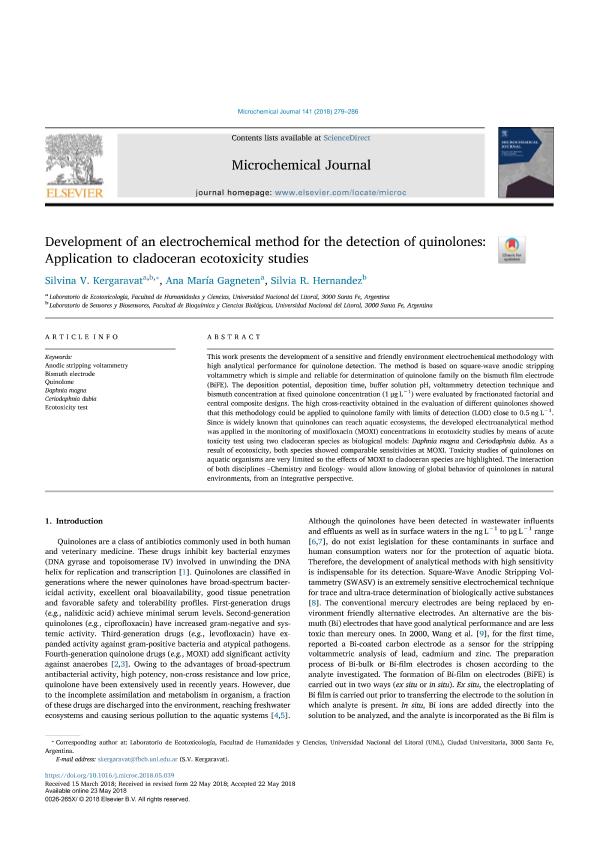Artículo
Development of an electrochemical method for the detection of quinolones: Application to cladoceran ecotoxicity studies
Fecha de publicación:
09/2018
Editorial:
Elsevier Science
Revista:
Microchemical Journal
ISSN:
0026-265X
Idioma:
Inglés
Tipo de recurso:
Artículo publicado
Clasificación temática:
Resumen
This work presents the development of a sensitive and friendly environment electrochemical methodology with high analytical performance for quinolone detection. The method is based on square-wave anodic stripping voltammetry which is simple and reliable for determination of quinolone family on the bismuth film electrode (BiFE). The deposition potential, deposition time, buffer solution pH, voltammetry detection technique and bismuth concentration at fixed quinolone concentration (1 μg L−1) were evaluated by fractionated factorial and central composite designs. The high cross-reactivity obtained in the evaluation of different quinolones showed that this methodology could be applied to quinolone family with limits of detection (LOD) close to 0.5 ng L−1. Since is widely known that quinolones can reach aquatic ecosystems, the developed electroanalytical method was applied in the monitoring of moxifloxacin (MOXI) concentrations in ecotoxicity studies by means of acute toxicity test using two cladoceran species as biological models: Daphnia magna and Ceriodaphnia dubia. As a result of ecotoxicity, both species showed comparable sensitivities at MOXI. Toxicity studies of quinolones on aquatic organisms are very limited so the effects of MOXI to cladoceran species are highlighted. The interaction of both disciplines –Chemistry and Ecology- would allow knowing of global behavior of quinolones in natural environments, from an integrative perspective.
Archivos asociados
Licencia
Identificadores
Colecciones
Articulos(CCT - SANTA FE)
Articulos de CTRO.CIENTIFICO TECNOL.CONICET - SANTA FE
Articulos de CTRO.CIENTIFICO TECNOL.CONICET - SANTA FE
Citación
Kergaravat, Silvina Vanesa; Gagneten, Ana María; Hernández, Silvia Raquel; Development of an electrochemical method for the detection of quinolones: Application to cladoceran ecotoxicity studies; Elsevier Science; Microchemical Journal; 141; 9-2018; 279-286
Compartir
Altmétricas




